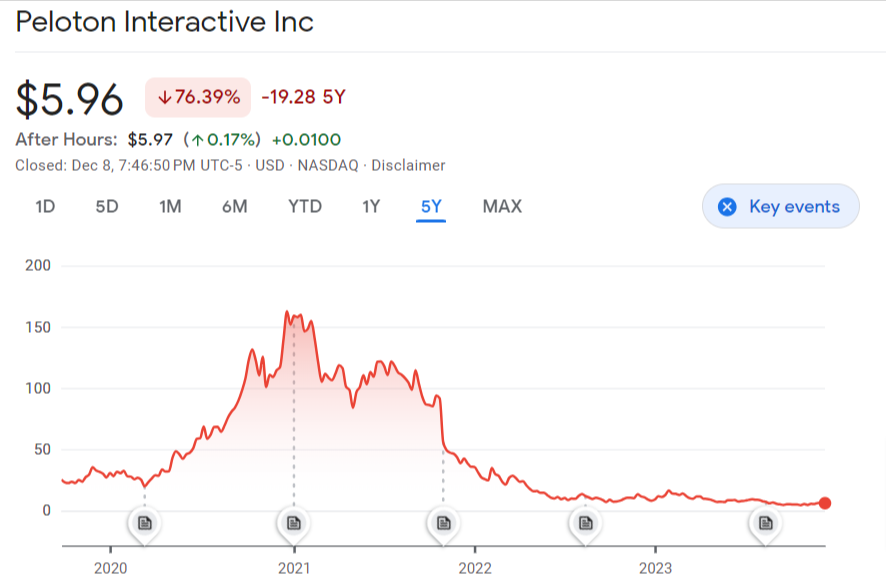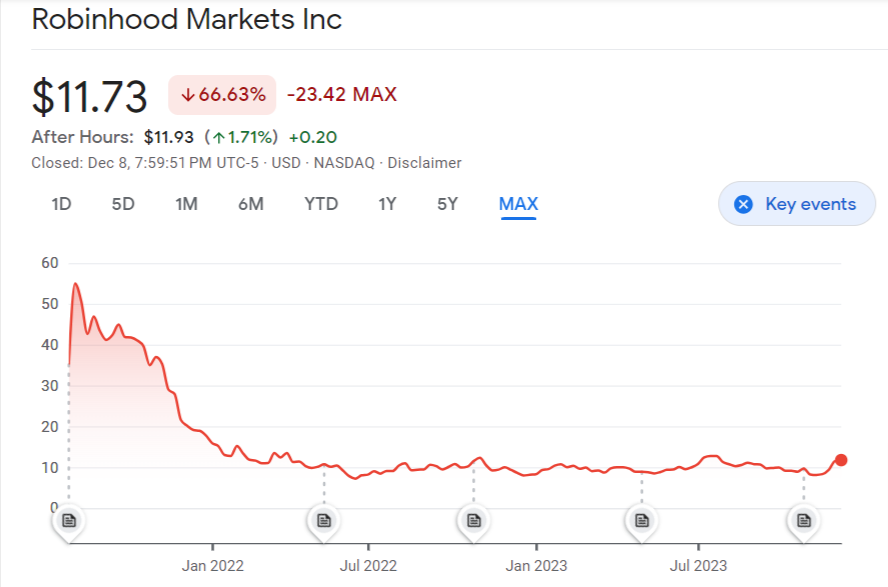In 2023, following a devastating bear market the previous year, the stock market launched an extraordinary recovery. The tech-heavy Nasdaq-100 has soared 46% year-to-date, while the S&P 500 has risen 19%.
The rebound may extend into 2024, as it is unusual for there to be consecutive annual declines in history. However, not every stock shares in the market’s overall profits. Persistent challenges may make it harder for Peloton and Robinhood, two struggling startups, to recover.
Bull Market’s Return Appears Likely in 2024
The subsequent rebound usually extends beyond a single year when key indices, such as the S&P 500, plunge more than 20% into bear market territory, as happened in 2022.
With the S&P 500 trading 27% higher than its October low, some have even gone so far as to say a new bull market has begun. Some people think it should be formalized when the index reaches a level that is 4% higher than its prior all-time high.
We can put the bear hibernation to rest if 2024 is another good year and we clear that benchmark. The chances are in their favor, given the stellar start stocks have had this year.
Annual reductions that occur consecutively have been extremely infrequent over many decades. More positive developments seem to be in the cards. Predictive investors should put their money into high-quality names that will do well in the future.
Pandemic Darling Peloton Fights to Stop the Bleeding
While investors were captivated by Peloton Interactive’s high-tech exercise equipment during the 2020 lockdowns, the firm is not likely to make a quick recovery.
As customers get back into their regular habits, the company’s fortunes take a sharp turn for the worst. Despite general market upturns in 2023, Peloton stock fell 27%. Its stock price is 96% lower than its all-time high, which is absolutely staggering.

In 2021, when pandemic limitations were at their worst, Peloton’s yearly income was more than $4 billion. However, people’s fitness routines have changed since gyms have reopened and on-site employment has resumed.
In 2023, the business expects total revenue of about $2.7 billion, a precipitous 32% drop from the previous year. New CEO Barry McCarthy had to take strong measures to stem the tide of profits that had been wiped out by that reversal.
Peloton has cut its workforce in half, moved manufacturing to save costs, and teamed up with shops like Dick’s and Amazon to increase its sales channels in the last year alone.
Also, in an effort to reduce volatility, the company has shifted its focus to more subscription-based revenue sources. Now, instead of buying bikes and treadmills all at once, customers may pay a monthly subscription to use Peloton gear.
Peloton has also made an effort to increase engagement within its mobile app by offering a wide variety of virtual workout programs, including jogging, yoga, strength training, and more, in the hopes of attracting customers who aren’t interested in its equipment.
Last quarter, Peloton’s operating expenses were down 61% year-over-year, yet the company still lost a substantial $157 million.
In the next quarters, we must find a way to turn a profit because our financial reserves are running low. The effect of recent collaborations with companies like Lululemon and the NBA is unclear, while they may increase exposure.
Investors in Peloton have a lot of options in a possible bull market, and the company faces a lot of uncertainty heading into 2024.
Robinhood Sees Worrying Downward Trends After its Pandemic Surge
An app for trading stocks and cryptocurrencies Just like other pandemic winners, Robinhood is having a hard time adjusting to the stabilizing economy. From a high point in early 2021, its monthly active user count has dropped 51%, and it fell below 10 million in the last quarter.
To make matters worse, engagement dropped, leading to an 11% year-over-year drop in transaction-based revenue associated with trading activity.

While Robinhood’s core business did saw a 29% increase in revenue last quarter, interest income was the sole driver of that rise.
Interest income more than quadrupled from the previous year, bolstering Robinhood’s financials, as a result of increasing rates that increase returns on the company’s balances and its customers’ funds. It was the main contributor to overall sales.
However, Robinhood’s saving grace may vanish in 2024 due to the Federal Reserve’s anticipated interest rate cuts. A combination of falling interest income and falling engagement can cause the company’s transaction-based revenue to decline in the near future.
In addition, Robinhood’s capital pile funding interest earnings might quickly deplete if losses persist despite improvements.
Following the collapse of Robinhood’s epidemic boom in 2024, these alarming indicators suggest a bleak future. There aren’t many positive developments that could propel a long-term recovery in its stock price, which is still 86% below its all-time high.
Robinhood and Peloton, two companies that have fallen behind, are certain to continue their challenges in the coming year, while investors anticipate a new bull market.





